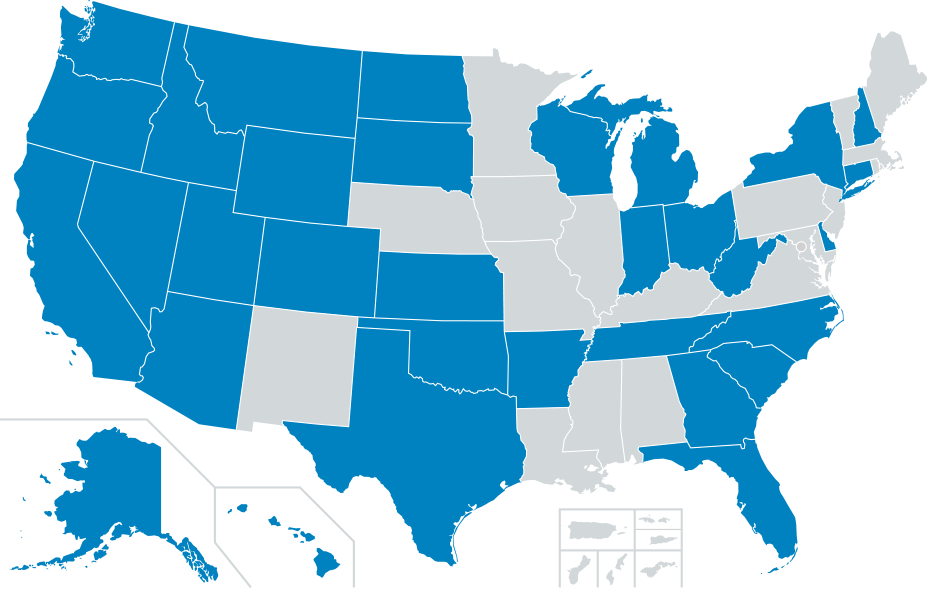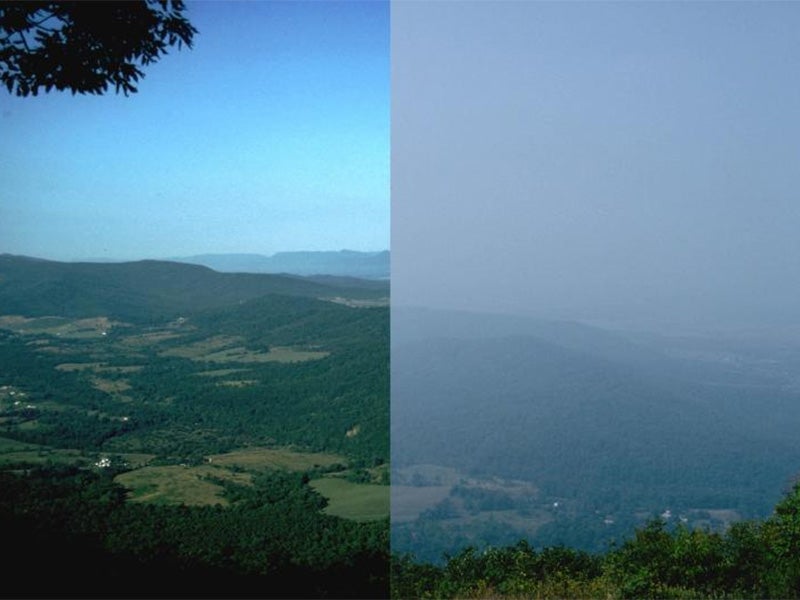U.S. District Court Finalizes Haze Pollution Consent Decree to Speed Up Protections for Public Lands
Victory
—Victory will bring clearer views and cleaner air to national parks
Contact
In response to legal action by Earthjustice, Environment Integrity Project, National Parks Conservation Association (NPCA), and Sierra Club, the U.S. District Court for the District of Columbia signed a consent decree today that includes deadlines for the U.S. Environmental Protection Agency (EPA) to take action on 32 states’ plans to reduce haze pollution that harms air quality in many of our most treasured national parks and wilderness areas.
After over a decade of urging EPA and state agencies to protect clean air in and around public lands, the final consent decree represents a tangible, welcome step forward in fulfilling the Clean Air Act’s mandate to eliminate haze pollution in national parks and wilderness areas.
The court signed and entered the final consent decree in the U.S. District Court docket.
In chronological order of EPA’s deadline to issue determinations, the 32 states are: Kansas, New York, Connecticut, New Hampshire, Delaware, Wisconsin, Georgia, North Carolina, Utah, Wyoming, West Virginia, Arizona, Ohio, Idaho, Michigan, Texas, California, Florida, Oregon, Colorado, Montana, South Carolina, South Dakota, Tennessee, North Dakota, Indiana, Washington, Hawaiʻi, Nevada, Alaska, Arkansas, and Oklahoma.

The U.S. EPA must take action on 32 states’ plans to reduce haze pollution that harms air quality in national parks and wilderness areas.
This interactive dashboard shows where EPA will take action on Regional Haze plans, and which coal plants contribute the most haze pollution.
“This settlement secures overdue relief for communities that have suffered from industry pollution for too long,” said Sierra Club Beyond Coal Director Laurie Williams. “The Regional Haze Rule preserves air quality in our country’s most iconic national parks, but it also protects public health for many Americans, especially in communities overburdened by fossil fuel pollution. Sierra Club will be fully engaged to ensure that states and EPA are held accountable for meeting these deadlines and finally control air pollution from major industrial polluters — including many coal plants that have dumped air pollution without mitigation for decades.”
“We’re heartened to have concrete deadlines now for final plans across 32 states — all of which contribute to regional haze problems harming national parks,” said Ulla Reeves, Interim Director of the National Parks Conservation Association’s Clean Air Program. “Though past due, this settlement keeps national parks from Joshua Tree to the Everglades — some of the most polluted parks in the country — top-of-mind for decision-makers who must ensure that we reduce haze pollution from blurring the iconic views visitors travel far and wide to experience.”
“The EPA is finally acting on the Clean Air Act’s mandate to get states to eliminate haze pollution in national parks and wilderness areas. This is not just about iconic American views, but also protecting downwind communities from dangerous pollution. Now the EPA must ensure that the state plans significantly cut air pollution, as the law requires,” said Charles McPhedran, senior attorney with Earthjustice, which represented Sierra Club and NPCA.
Background: Haze is a major concern for 98% of national parks in the United States. The same pollutants responsible for the widespread air pollution also harm public health, particularly in communities experiencing targeted, systemic racism from polluting industries. Air pollution from burning fossil fuels and other sources worsens community health, increases healthcare costs, and harms nature and sensitive ecosystems on public lands.
EPA’s Regional Haze Rule was established in 1999 to address air pollution, primarily from coal-fired power plants and industrial sources, that harm visibility in designated national parks and wilderness areas, otherwise known as Class I areas. Under the Clean Air Act, states must submit and update plans detailing how they will comply with the Regional Haze Rule every 10 years. EPA is required to approve or reject these State Implementation Plans (SIPs) within 18 months, but EPA has failed to act on Regional Haze SIPs submitted by 32 states.
In June 2023, the Sierra Club, National Parks Conservation Association, and Environmental Integrity Project, represented by Earthjustice and Sierra Club’s Environmental Law Program, filed a lawsuit against EPA for the agency’s failure to issue decisions on the state SIPs. The consent decree, moving forward today, establishes a timeline for EPA to approve, deny, or partially approve the outstanding state plans at assigned dates between 2024 and 2026, beginning with Kansas. If EPA rejects a SIP, the agency must issue a Federal Implementation Plan (FIP) detailing how the state must address haze pollution.
Earthjustice, National Parks Conservation Association, Environmental Integrity Project, and Sierra Club, alongside communities relying on parks and wilderness areas for their livelihoods and health, continue to underscore the need for not only stronger protections against haze, but a stronger consideration of environmental justice factors.

Additional Resources
About Earthjustice
Earthjustice is the premier nonprofit environmental law organization. We wield the power of law and the strength of partnership to protect people's health, to preserve magnificent places and wildlife, to advance clean energy, and to combat climate change. We are here because the earth needs a good lawyer.